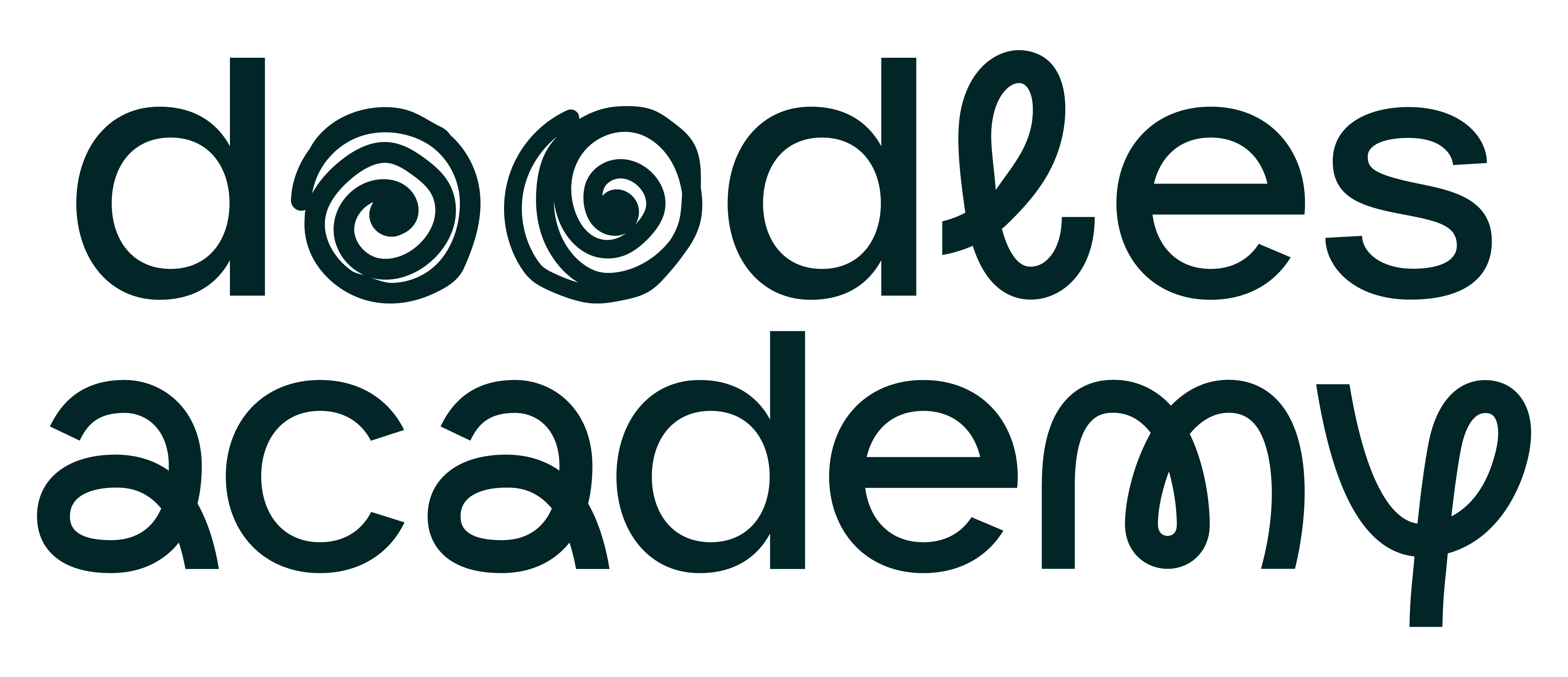“The Circle Project”
Students appreciate how belonging to groups and communities enriches their personal identity and illuminate how they fit into these different ‘circles’.
By Kas Patsula, a K-2 grade classroom teacher in Calgary
“The Circle Project” is a grade one/two task that builds community and connection. It is grounded in the wonderful book, ‘The Circles All Around Us’ by Brad Montague. You can view it being read below.
The book states that when we’re first born, our circle is very small, but grows as relationships get built. I was inspired to design this companion weaving project to incorporate social studies, language arts, as well as touching on standards for presentations and sharing.
Connecting to Social Studies through Weaving:
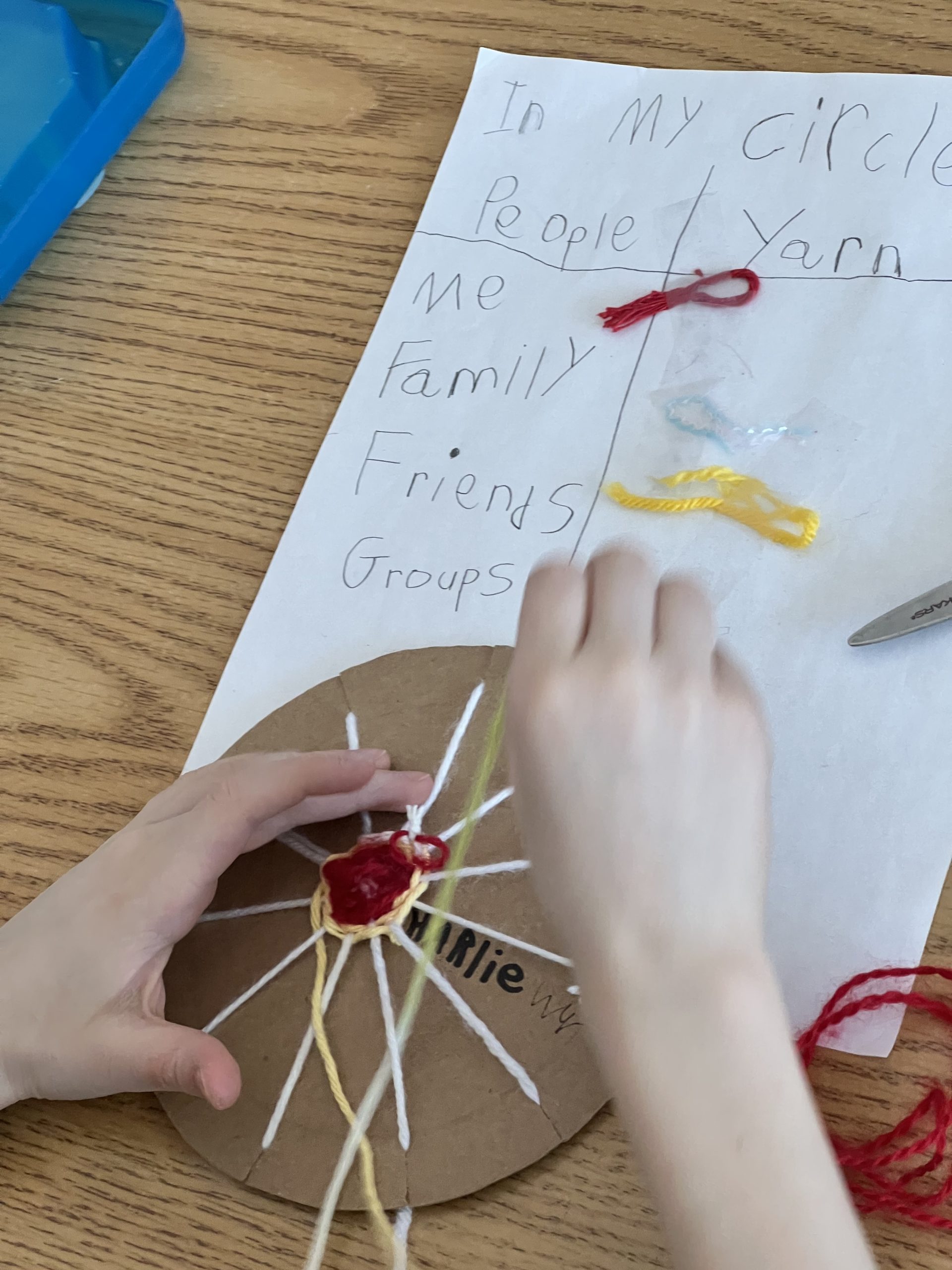
I connected the first part of this project to Social Studies, with a goal of helping students appreciate how belonging to groups and communities enriches their personal identity and illuminating how they fit into different ‘circles’, such as Brownies/Cubs, dance, sports, or music lessons. As a class, we brainstormed all the possible connections we make in the world, beginning with our immediate family and extending outwards. The students eagerly exclaimed, “I take swimming lessons too” as the uncovered novel connections to the classmates as well as how many ties they had to their own community, through this discussion.
For the next step, I had students select a colour of yarn for each group that they belonged to and create a t-chart. The t-chart was a concrete and visual depiction of their ‘circles’. They then wove a circle, referencing their colors.
Then, each student made a loom out of cardboard and prepared it for weaving by adding a warp (a yarn underlay). They then created a weaving, using the yarn colours that corresponded with the circles they identified on their t-chart. The result was a small circular weaving that told the story of the important relationships that circle the student to the groups that extend into the community.
This project took considerable time, effort and attention to the details of the pattern of over, under in the weaving task. Plus the tying of all the different colours of yarn was a fine-motor challenge for the students, but they supported each other which added aspects of community-building to this task. Whenever a colour of yarn changed in the weaving, a new piece of wool had to be tied to the woven piece of yarn.
Some students could tie knots to affix the two pieces better than others and they became ‘tying ambassadors’ for the entire classroom, generously offering their skills to all their peers.
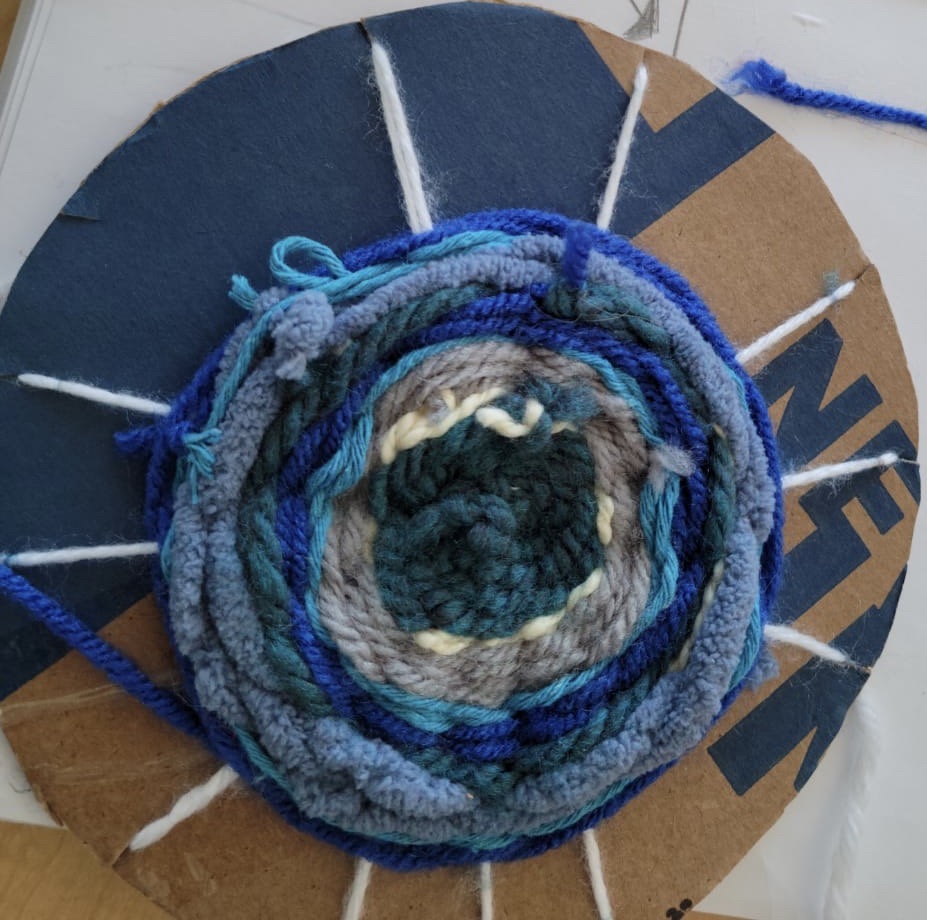
Adding Poetry and Connecting to Language Arts:
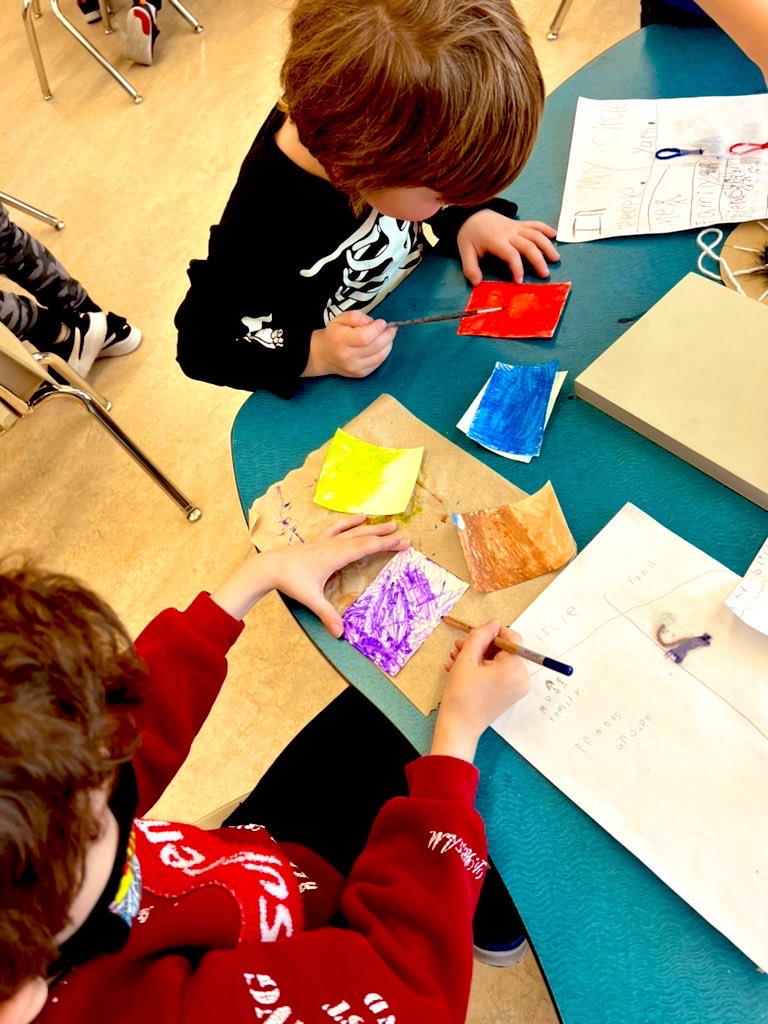
With the weaving complete, we began the Language Arts portion of the project. A narrative can be retold or interpreted visually, and so I had students create a poem to complement their weaving.
Students first matched the yarn colours with watercolour pencil crayons on small paper.
In preparation for the poetry writing, on the back of this paper I had students generate powerful, meaningful words inspired by that colour. We worked as a whole class to model how to generate emotions and powerful words related to a colour of yarn that transitioned to a painted card. After practicing a few colours together, students set off to think about their personal colours, independently. This vocabulary became the foundation of the students’ poetry about the colours found in their weaving emphasizing the three r’s—rhythm, rhyme and repetition.
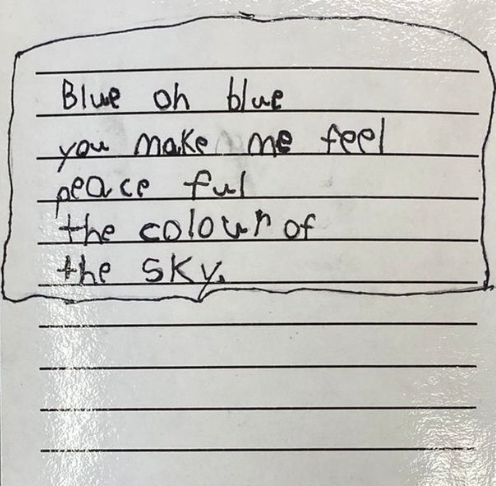
To evaluate the task, we shared the weaving and poetry at our Parent Interviews. It was a very rich piece of learning as students were able to explain that each piece of yarn holds value artistically but also holds personal meaning for their connections in the world. For example, I asked them to speak to whom each colour represented, or check their t-chart for clarification, should they have forgotten a ‘circles’ name. I also asked them to speak to the group that each colour represented in relation to the circle of important people who supported and surrounded them. They were also able to discuss the difficulties and successes in the task and how they overcame any struggles. Struggles included inability to tie the pieces of yarn, difficulty maintaining the pattern when weaving, being unable to come up with community groups students might belong to being that it is the heart of Covid (we solved this dilemma by stating what have you done in both the past or plan to do in the future)?
My school has not had parents in for over a year. When I sent home this project home prior to interviews, parents reported that students were overflowing with information and so excited to share ALL the work that went into this project (we worked on it for almost two months!!!). Thus for families desperate for their children to share about their day, this ticked all the boxes.
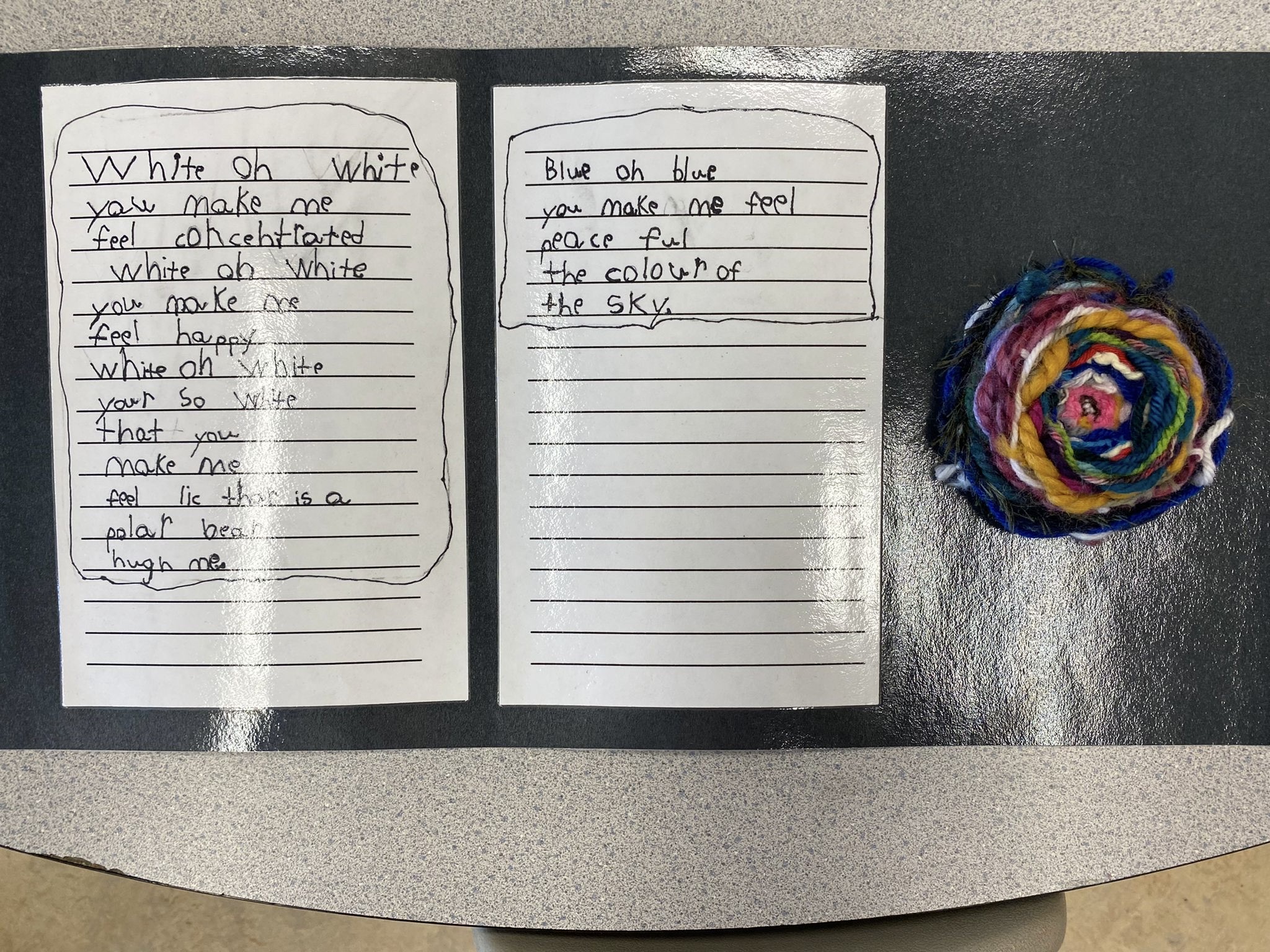

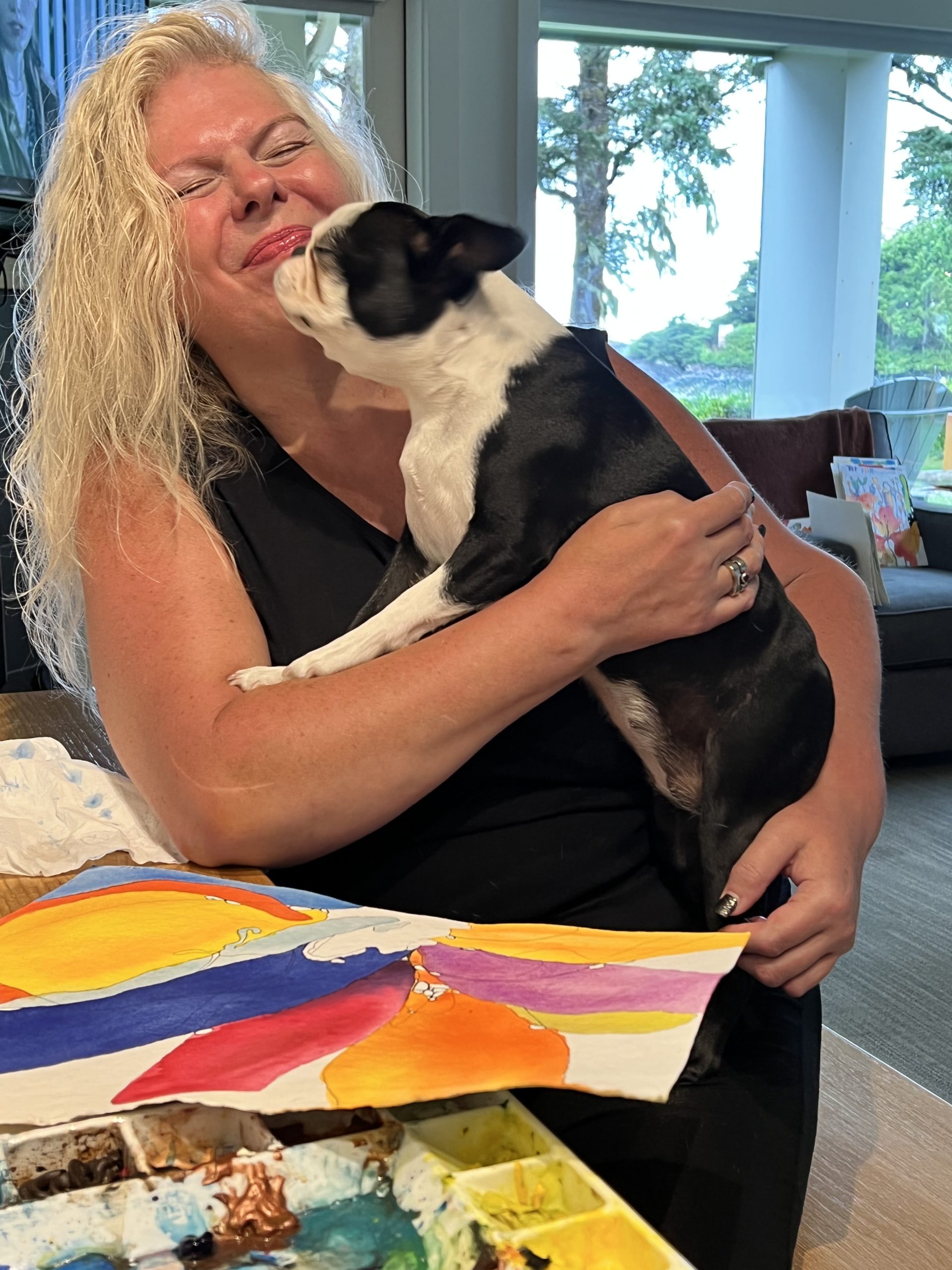
Kas Patsula
Kas Patsula has taught kindergarten, grade one and two in Calgary with a strong literacy and arts focus for over 22 years. She believes that Literacy is the subject that opens the most opportunities to learners; art is the vehicle she uses most to capture students’ interest. She uses art in her teaching whenever possible and believes that art has the power to enhance learning and foster understanding.
